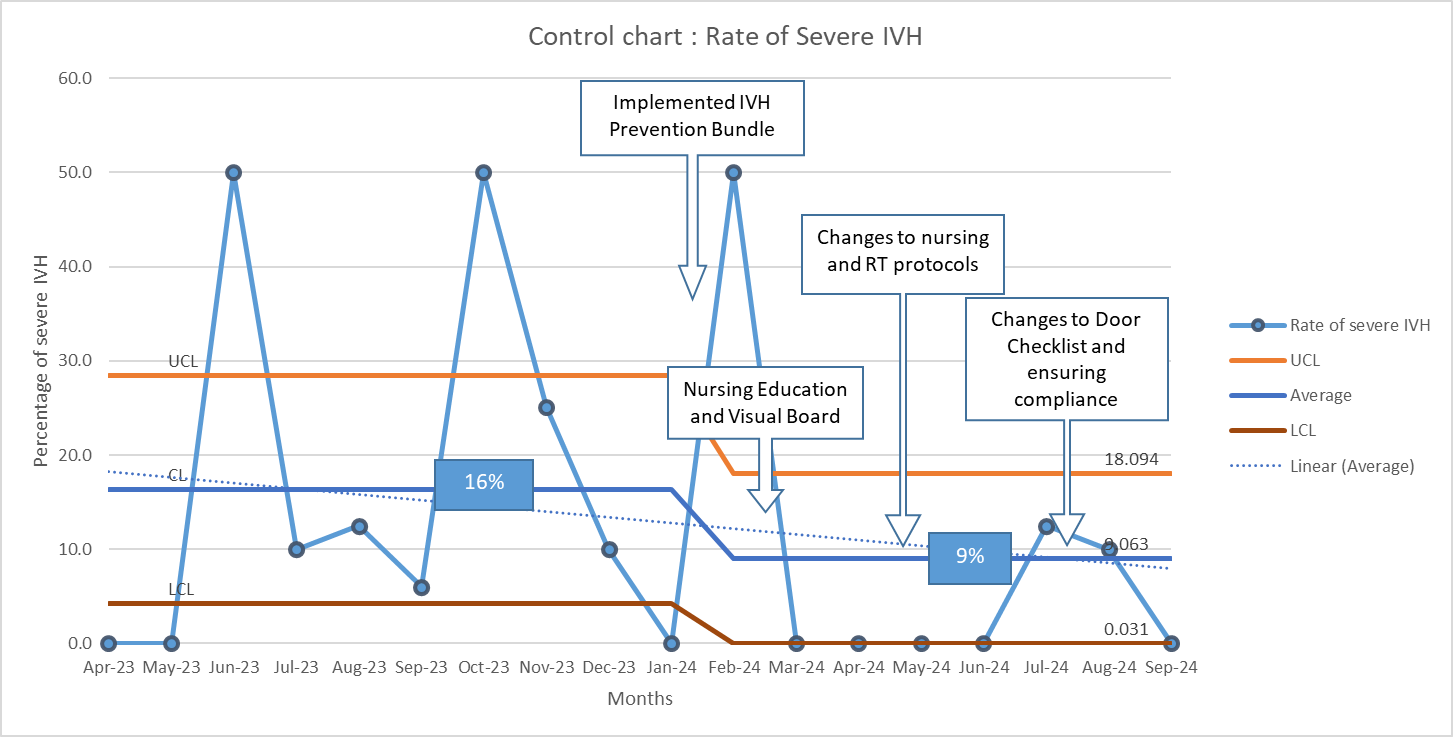Neonatal Quality Improvement 3
Session: Neonatal Quality Improvement 3
092 - Quality Improvement Project to reduce incidence of severe intraventricular hemorrhage in a level 3 community NICU
Friday, April 25, 2025
5:30pm - 7:45pm HST
Publication Number: 92.6514
Abhinav Pal, Stormont Vail Hospital, Topeka, KS, United States; Kathryn L. Baird, Stormont Vail Health, Topeka, KS, United States; Kshama Ojha, Children's Mercy Hospitals and Clinics, topeka, KS, United States; Imtiaz Ahmed, Stormont Vail, Topeka, KS, United States; Maria Navarro, Stormont Vail Health, Topeka, KS, United States

Kathryn L. Baird, APRN, NNP-BC (she/her/hers)
Neonatal Nurse Practitioner
Stormont Vail Health
Topeka, Kansas, United States
Presenting Author(s)
Background: Intraventricular hemorrhage (IVH) is a severe complication in neonates, particularly among preterm infants. Implementing an IVH prevention bundle could significantly reduce the incidence of severe IVH in this vulnerable population
Objective: This project aims to evaluate the impact of implementing a standardized IVH prevention bundle on the incidence of severe IVH in preterm infants born ≤1500g and ≤30 weeks of gestation.
Design/Methods: A quality improvement initiative was conducted on all infants born ≤1500g and ≤30 weeks of gestation, by introducing an IVH prevention bundle. The bundle comprised evidence-based practices, including standardized protocols for blood pressure management, minimizing fluctuations in cerebral blood flow, and gentle handling of infants. Severe IVH was defined as grade 3 or grade 4 IVH. Baseline data was collected from April 2023 to December 2023, with intervention occurring from January 2024 to September 2024. Control charts were used to analyze the effect of intervention. Multiple PDSA cycles were performed at different periods of study
Results: A total of 52 infants were assessed before initiation of IVH bundle and 47 during intervention. Birthweights ranged from 570 to 1800g. Following the implementation of the IVH prevention bundle, the incidence of severe IVH reduced from 16% to 9%, a 44% reduction from baseline (p=0.02). The rates of BPD and mortality remained similar between the groups.
Conclusion(s): The adoption of an IVH prevention bundle resulted in a meaningful reduction in the incidence of severe IVH among preterm infants. This standardized approach emphasizes the value of evidence-based practices tailored to maintain stable cerebral blood flow, ensure optimal blood pressure a, and prioritize gentle handling.
Control chart of incidence of severe IVH
 Control chart of incidence of severe IVH
Control chart of incidence of severe IVHNursing Door Checklist
.png) IVH prevention checklist
IVH prevention checklistKey Driver diagram
.png)


